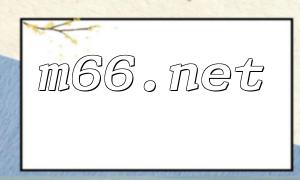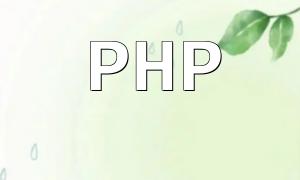With the rapid development of software, building testable applications has become more important than ever. The MVC (Model-View-Controller) pattern is a widely adopted architecture that effectively separates code for better reusability and maintainability. PHP, as a widely used programming language, has many mature and powerful frameworks to help developers build testable MVC applications. In this article, we'll show you how to use the PHP8 framework (like Laravel) to achieve this goal.
The MVC pattern is an architectural style that separates the application logic into three main components:
The main advantage of the MVC pattern is its ability to separate concerns, making the application easier to maintain, extend, and test.
Choosing the right PHP framework is essential when building a testable MVC application. Common PHP frameworks include Laravel, Symfony, and CodeIgniter. Laravel is a popular and powerful PHP framework that supports PHP8, offering rich features and tools to build testable MVC applications. It is ideal for developers looking to develop robust applications quickly and efficiently.
Before starting, we need to install and configure the PHP framework. Here's how you can do it with Laravel:
<span class="fun">composer require laravel/laravel</span>
<span class="fun">cp .env.example .env</span>
<span class="fun">php artisan key:generate</span>
In Laravel, creating the basic MVC structure is straightforward:
<span class="fun">php artisan make:controller HomeController</span>
<span class="fun">php artisan make:model User</span>
Writing code for an MVC application in Laravel is very easy. Here is a simple example:
namespace AppHttpControllers;
<p>use AppModelsUser;<br>
use IlluminateHttpRequest;</p>
<p>class HomeController extends Controller<br>
{<br>
public function index()<br>
{<br>
$users = User::all();<br>
return view('home', compact('users'));<br>
}<br>
}namespace AppModels;
<p>use IlluminateDatabaseEloquentModel;</p>
<p>class User extends Model<br>
{<br>
protected $table = 'users';<br>
}@foreach($users as $user)
<p>{{ $user->name }}</p>
@endforeachWriting test cases is a critical step when building a testable MVC application. In Laravel, we can use PHPUnit to write unit tests. Here's a simple example:
namespace TestsUnit;
<p>use AppModelsUser;<br>
use TestsTestCase;</p>
<p>class UserControllerTest extends TestCase<br>
{<br>
public function testIndex()<br>
{<br>
$response = $this->get('/home');<br>
$response->assertStatus(200);<br>
$response->assertSee('John Doe');<br>
}<br>
}<span class="fun">vendor/bin/phpunit</span>
By using PHP8 frameworks to build testable MVC applications, we can effectively separate the application logic and database interaction, achieving better code reusability and easier maintenance. Choosing the right PHP framework, creating the basic structure, writing MVC application code, and writing test cases are essential steps in building a testable MVC application. We hope this guide helps you successfully build testable MVC applications in PHP.









